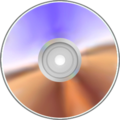This article has multiple issues. Please help improve it or discuss these issues on the talk page . (Learn how and when to remove these messages)
|
| UltraISO | |
|---|---|
 | |
 A screenshot of UltraISO | |
| Developer(s) | EZB Systems |
| Initial release | April 20, 2002 |
| Stable release | 9.76.3860 / 8 July 2023 [1] |
| Operating system | Microsoft Windows |
| Platform | IA-32 and x86-64 |
| Type | Optical disc authoring software and virtual drive |
| License | Commercial |
| Website | www |
UltraISO is a crippleware application for Microsoft Windows for creating, modifying and converting ISO image files used for optical disc authoring, currently being produced by EZB Systems.
Contents
Initially UltraISO was shareware however since 2006 it has turned into commercial software. [2] The 'Free Trial' version is limited to ISO images of 300 MB or less, effectively making it Crippleware. [3]